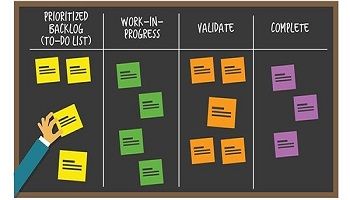Best of PMTimes: The Greatest Challenges When Managing a Project
What do you find to be the hardest part of managing a project? I bet if you asked ten different project managers that question you would get at least six or seven different answers.
I believe that many on the outside of project management looking in probably think it is easy. Be organized and you’ve got it made, right? I wish it was that easy but then again if that was all there was to it I guess the pay would be considerably less than it is and we’d all miss the challenge.
No, project management about much more than just being organized but you already know that. What do you find to be the most difficult aspects of the daily project management grind? For me, and from what I’ve perceived from many of my colleagues, it comes down to a fairly common list of about five things, depending on the types and sizes of projects and the clients we are dealing with, of course. There are always those variances. Let’s consider these five items.
The project budget.
The project budget has to be on here, likely always #1 or #2 on every project. 95% of the population has problems managing their own money! That doesn’t make them that much better at managing someone else’s!
The project budget is always a challenge. Unlike your own budget where it’s only you or a few people spending, for a project budget, you may have 87 different people, places or things charging to it. The project budget status can go from healthy to dire straits overnight as charges come through accounting and hit your project and now you must go figure out why.
Staying on top of the budget every week by updating the budget forecast with actual charges from the week before and re-forecasting it for the remainder of the project is one way to combat those budget surprises. Perhaps the only way. And, by doing this you can just about guarantee that it doesn’t go more than 10% out of control vs. the 50% overage that an unchecked budget can quickly realize. The 10% overage is a fairly reasonable/easy fix. You may never recover from the 50% overage.
Scope management / change control.
Scope management and change control are two of those two-word phrases that are basically like four-letter words in the world of project management. Scope management is always a challenge for the project manager and project team because some things are close calls on whether they are in or out of scope. Plus, we aren’t always thinking in terms of “scope” when we are plugging through the work or fixing issues. And change control results in those ugly change orders for which customers have to pay extra, and that’s always a fun thing for the PM to bring to the project sponsor’s attention to obtain approval.
Resolving team conflicts.
Some people actually thrive on conflict. Not me. I’d prefer that we all just get along and do our jobs. That’s why I like project management better than, say, managing a team of application developers who report directly to me. I’ve done that; I’ve had staff at several different organizations where I’ve worked. Resolving conflicts, personnel issues, giving performance reviews – these are a few of my least favorite things.
Advertisement
[widget id=”custom_html-68″]
Pleasing everyone with the status report.
You can please some of the people all of the time. You can please all of the people some of the time. But you can’t please all of the people all of the time. Is this true? With status reporting it seems to be the case. But if you want to maintain your sanity and have time to manage your other projects and job requirements, it is in your best interest to find a status report format that works for everyone. By everyone I mean all stakeholders who care to hold your status report in their hands and a few who don’t care but you want them to care.
Create a usable and informative dashboard for everyone – especially for the project sponsor’s and senior management’s viewing pleasure. For your senior management, a few of the key stakeholders, and possibly some high-level players on the customer side, this may be all they ever want to see. It can be some high-level percentages or possibly a green-yellow-red stoplight approach to reporting the timeline, tasks, and budget health. Beyond that you want the weekly detail that goes into any good status report. This status report should drive the weekly team and client meetings. You will want to report on completed tasks, what’s happening now, what’s coming up soon and all outstanding issues and change orders.
The status report can be painful and a huge weekly chore on your to-do list, but if you can figure out how to create a one-size-fits-all approach to status reporting on your project, you’ll save time and effort overall by not creating several different reports trying to please everyone on your project routing list.
Getting all detailed requirements documented.
This one can be a real headache. Why? Because it seems that no matter how hard you try, no matter how many eyes are on it, no matter how many experts are involved and no matter how much your project client participates and insists “that’s it”, you’ll eventually find that something was overlooked.
It’s ok because the fault usually lies with the project customer and they end up paying for the extra work and time in the form of a change order. Still, customers don’t like change orders, and it usually means some painful re-work. It would be nice always to get it right the first time. But that’s almost never the case.
Call for input
Project management is challenging. Period. Some parts are harder than others. Some we master. Some we never really get used to or we seem to at least always make them hard. I wish I had a magic formula or all the time in the world on every project so that we could do everything well and everything right, but that is never the case. We always need to cut corners somewhere, and that doesn’t make most of these challenges easier…only harder.
How about our readers? What are your biggest challenges or least favorite activities associated with managing projects? What have you found to be your most troubling parts of managing a project?




